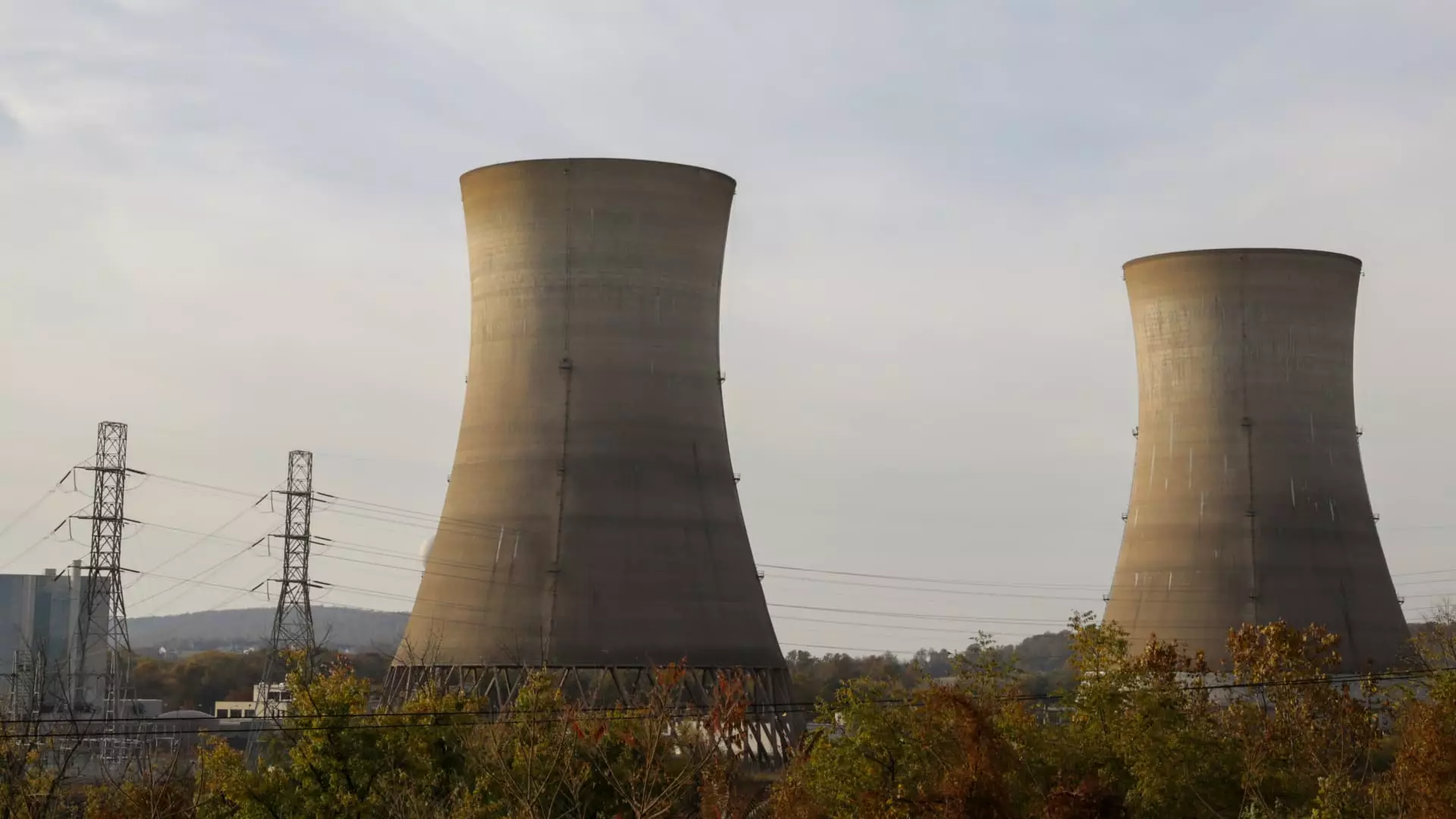In an era marked by unprecedented energy demands, the spotlight is increasingly shining on uranium as a potential keystone in our energy infrastructure. John Ciampaglia, CEO of Sprott Asset Management, strongly advocates for nuclear energy as the landscape shifts in response to escalating needs. His firm oversees the Sprott Physical Uranium Trust, which has recently seen a remarkable uptick in value, signaling investor enthusiasm. “Up 22% over the past two months,” he notes, underscoring a trend that reflects not just short-term gain but a deeper, systemic shift. The pivotal question, however, is whether this robust rebound is a sustainable trend or merely the latest potential bubble in the ever-fluctuating energy market.
While Ciampaglia paints a favorable picture of nuclear energy, highlighting its efficiency and minimal greenhouse gas emissions, skepticism lingers. Has the recent optimism around uranium and nuclear power truly stemmed from a genuine belief in its potential, or are we witnessing a frantic scramble for solutions amidst global instability? The energy crises of 2022, particularly in Europe due to geopolitical tensions, have definitely sparked conversations about energy security. But let’s not overlook the complexity of transitioning to nuclear power that we can no longer ignore.
Nuclear Energy: A Double-Edged Sword
Promoting uranium as an energy savior comes with its own baggage. The stark reality is that building nuclear power plants is a prolonged endeavor, often stretching over decades. As Jan van Eck of VanEck pointedly questions, “What’s going to happen in the meantime?” The impatience of investors is a powerful force, and with the urgent need for immediate energy solutions, can we afford such protracted timelines? The truth is, we must grapple with balancing our thirst for faster energy solutions against the long-term requirements of nuclear infrastructure.
The long-term reliability that nuclear energy promises holds water, but the associated risks are monumental. The shadow of nuclear disasters looms large, pressuring industries and governments. As we romanticize uranium’s potentially boundless energy, we must ask if we are sufficiently prepared for the oversight and governance needed to manage this powerful resource responsibly.
A Global Shift or a Localized Trend?
Ciampaglia asserts that aside from Germany, most countries are reverting to nuclear energy; a trend that seems encouraging at first glance. However, are we witnessing a meaningful global shift, or merely localized tendencies influenced by immediate crises? Energy policy must take into consideration the diverse socio-economic landscapes of various countries. What works for one could be disastrous for another, particularly in developing nations struggling to manage existing infrastructures.
As these nations weigh their options, it becomes clear that the global dialogue surrounding nuclear energy is as diverse as the nations participating in it. America’s recent push under the Trump administration to fast-track nuclear initiatives might be a captivating subplot, but we have to question the implications of such haste. The reorganization of the Nuclear Regulatory Commission is indeed a bold move—yet, are government-led initiatives the best way to ensure long-term energy stability? This centralization could sideline local voices, and the NIMBY (Not In My Backyard) complex may lead to conflict between local needs and federal ambitions.
The Technological Renaissance: A Glimmer of Hope?
Companies like Oklo and Nuscale Power, highlighted by van Eck, represent a technological renaissance in nuclear energy, potentially streamlining operations and making them more accessible. This surge of private sector innovation might drive down construction times and costs. However, as we invite private enterprises to the table, we must remain vigilant about the implications of prioritizing profit over safety and environmental accountability.
The combination of a budding technological landscape and a daunting responsibility presents us with an exciting yet precarious crossroads. Power demands—particularly from data centers—are placing additional pressures on our energy system. The stakes could not be higher because if we fail to tread cautiously, we might sacrifice quality for speed, an unwise trade-off in the quest for energy solutions that also need to be sustainable.
As we embark on this journey toward a nuclear-fueled future, we must engage critically, advocating for a balanced approach that prioritizes safety, sustainability, and community engagement over mere corporate interests and short-term gains. The road ahead is intricate, and its unfolding demands our utmost attention to navigate it responsibly.

